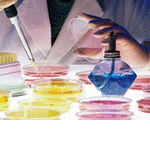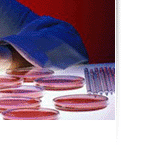Click here to go back.
THE BIOCHIP BREAKTHROUGH:
Human Cells Replacing Animal Bodies
Technological advances using cell cultures and human enzyme generation have allowed scientists to create what are known as “BioChips.”
“Drugmakers may soon have a new tool to assess safety much earlier in the process, saving them money and time and negating the need to test early-stage compounds on live animals.
“These biochips—called MetaChip and DataChip—mimic what the body does when it ingests a drug. MetaChip is actually a glass slide dotted with 20-nanoliter droplets—each 20 billionths of a liter—of a solution containing human liver enzymes; researchers can test toxicity of compounds by introducing these chemicals into the solution droplets and seeing how they react.
“DataChip is also glass slide, but it is lined with droplets containing cell cultures from the bladder, kidney or liver; scientists can test a chemical's safeness by putting drops of it onto the slide and measuring the culture's growth or shrinkage over time. The two biochips can also be used in tandem—a MetaChip can be turned over and applied directly to a DataChip to see how the materials interact.” Scientific American December 21, 2007
“The cell culture slide, known as the DataChip, has been tested with human bladder, liver, kidney, heart, skin, or lung cells. The enzyme containing slide is called the MetaChip. When the two slides are sandwiched together and incubated, they mimic the body’s reaction to compounds. If the cells stop growing, appear sick or die, it’s an indication that a toxin is present.” NIEHS (National Institute of Environmental Health Sciences) News, March 2008
“Biochips promise to deliver better drug and chemical testing, cutting costs and nixing the need for most animal testing.” Scientific American December 21, 2007







